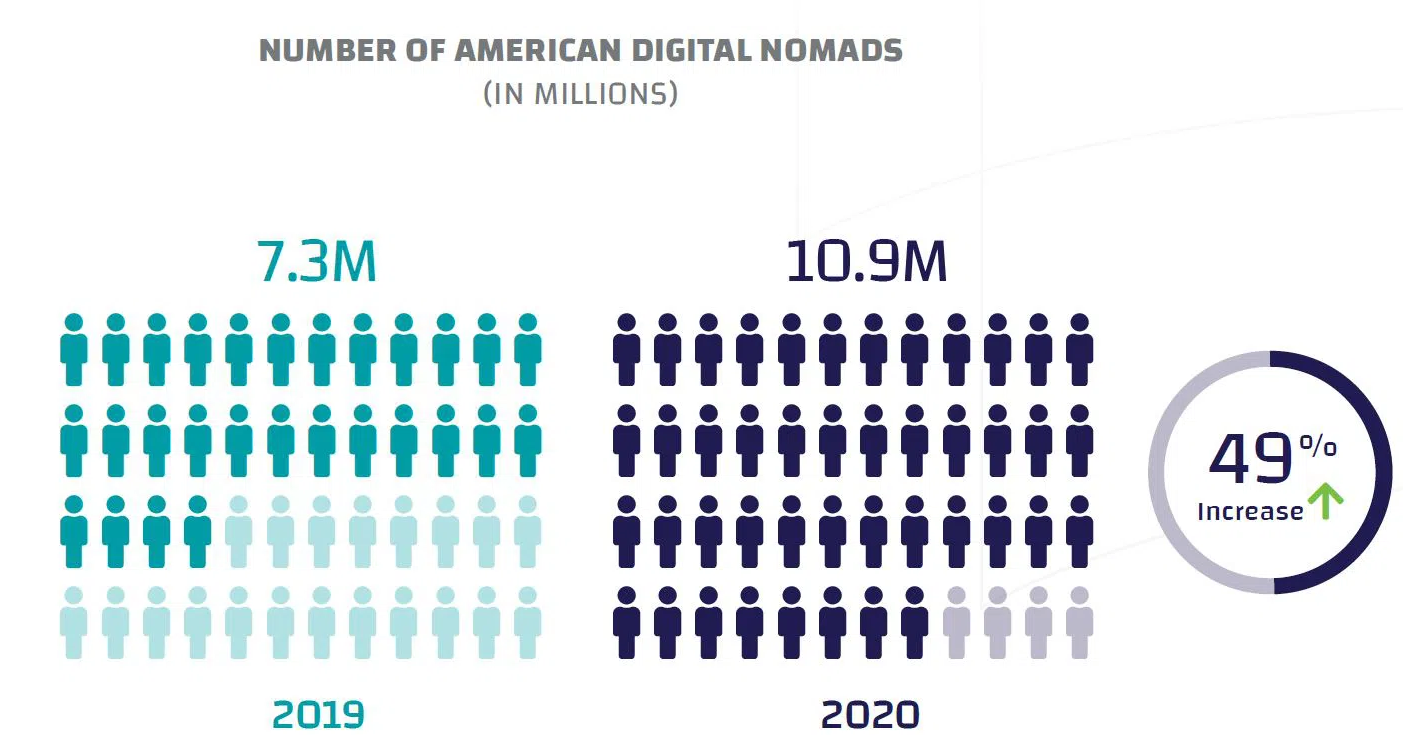What is Remote Work?
When an employee has access to the internet and the necessary equipment, they can work from anywhere outside of the office. This type of work arrangement may benefit both employees and employers because it provides workers with more work-life balance while also saving employers money on office space and other related expenses.

Why is Remote Work Growing?
There are several reasons why remote work is growing. One of the biggest reasons for this is technology, which has provided people with the opportunity to work from anywhere in the world as long as they have access to the internet and the necessary equipment. Because of this, companies and employees can now more easily access remote work.
Another element influencing the expansion of remote work is the changing attitudes toward the workplace and work. One method to do this is through remote work. Many people are searching for more adaptable work settings that let them balance their home and professional life. Additionally, companies are becoming increasingly interested in remote work as they become aware of its benefits, which include lower overhead expenses and higher productivity.
What is Digital Nomadism?
Remote workers who choose to travel and work from different places around the world are known as digital nomads. To stay in touch and be productive, they use technology. They frequently work in digital disciplines like graphic design, web development, and social media management. As long as they have access to the internet and the required tools, digital nomads can conduct their business from anywhere in the world
How COVID-19 Has Affected Digital Nomadism and Remote Work
Lockdowns and other COVID-19 pandemic response measures have made working from home necessary for many people, which has had a significant impact on remote work and digital nomadism. Remote work has suddenly increased because so many employees were able to keep working from home while the pandemic was still present.

Digital Nomads: How COVID-19 Impacted Digital Nomads. (2022, December 30). MBO Partners. Retrieved February 6, 2023, from https://www.mbopartners.com/state-of-independence/2020-digital-nomads-report/
Additionally, the COVID-19 pandemic has accelerated the digital nomad trend as more people seek out ways to work remotely while traveling. Many digital nomads can now travel and work from different places around the world thanks to the current environment, giving them the chance to explore new cultures and ways of life while providing for themselves.
Statistics On Remote Work & Digital Nomadism
• 69% of U.S. employees worked remotely at the peak of the pandemic [State of the Remote Workforce, Global Workplace Analytics and OwlLabs, 2020 – based on 2,500 survey responses from full-time workers]
• 5.7 million employees (4.1% of the U.S. employee workforce) telecommuted half-time or more before the pandemic [Global Workplace Analytics’ analysis of 2019 American Community Service (ACS) data]
• 56% of employees have a job where at least some of what they do could be done remotely [Global Workplace Analytics]
• 35% of employees would change jobs for the opportunity to work remotely full time (47% of Millennials and 31% of boomers); 37% would do so to work remotely some of the time (50% of Millennials and 33% of Boomers) [State of the American Workforce, Gallup, 2016]
• Digital nomadism is on the rise. After a 50% spike in the number of digital nomads between April and August 2020 (i.e. the height of the Covid 19 Pandemic)


Borrett, A. (2021, January 19). Digital nomads are capitalising on the rise in remote work. Tech Monitor. Retrieved February 6, 2023, from https://techmonitor.ai/leadership/workforce/digital-nomads-capitalising-rise-remote-work
The COVID-19 pandemic has accelerated growing trends like remote work and digital nomadism. For both employees and employers, these flexible work options have a number of advantages, including increased flexibility, lower overhead expenses, and higher productivity. Remote work and digital nomadism are likely to continue to gain in popularity in the years to come because technology now makes it possible for people to work from anywhere in the world and because of shifting attitudes toward the workplace.
